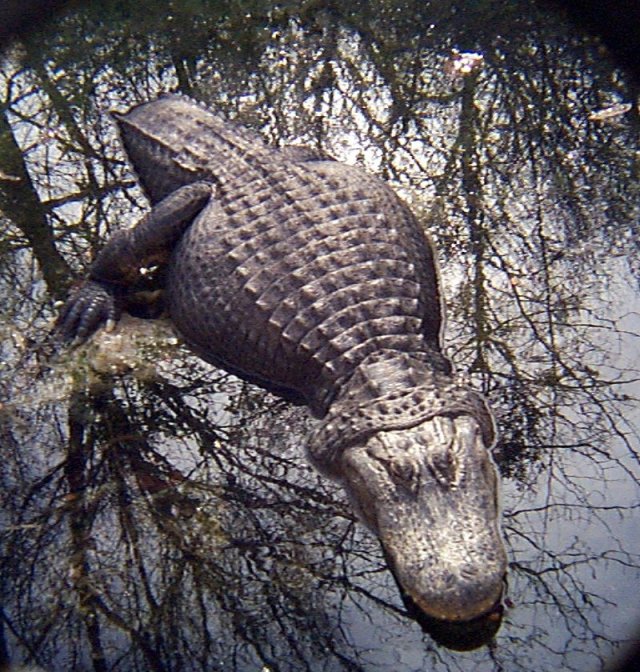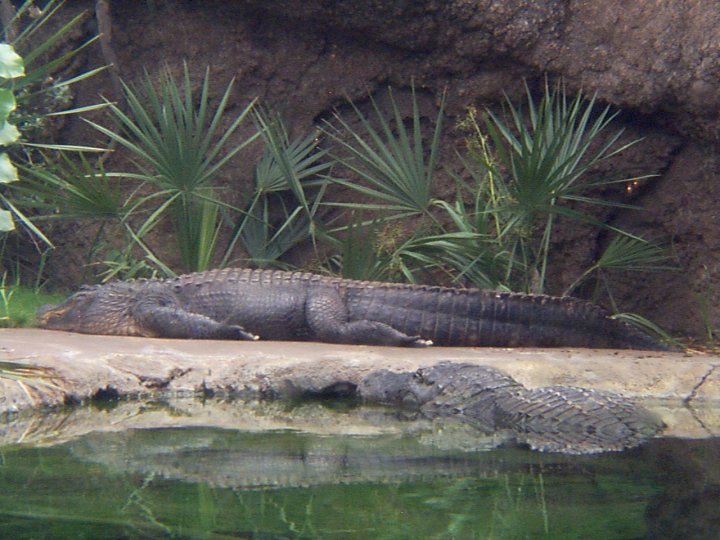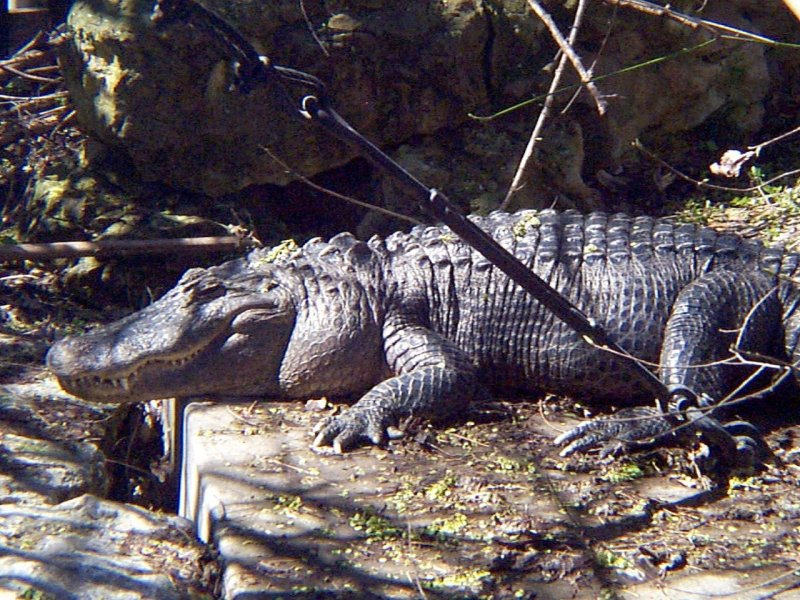The American Alligator
| Name: American Alligator |
| Scientific name: Alligator mississipiensis |
| Range: southeastern United States |
| Habitat: Large shallow lakes, marshes, ponds, swamps, rivers, creeks, and canals in brackish water areas |
| Status: Not threatened- Alligators are not an endangered species, but they are legally protected |
| Diet in the wild: Young: insects, snails, other invertebrates, frogs, small fish Adult: predominately fish, turtles, snakes, waterbirds, and small mammals |
| Diet in the zoo: carnivore diet |
| Location in the zoo: Texas Wild!: Swamps Exhibit |
| Comments About the Alligators of the Fort Worth Zoo: The Alligator in the Fort Worth Zoo seems large and lethergic. Alligators usually prefer to hunt at night, so during zoo hours they are resting. |
|
Personal Observations: The Alligator in the Fort Worth Zoo sits
so still you might think he is a statue. In fact, the crocodialian keeper says
that they often have to clean out the pond because people think it is a wishing
well and throw money in.
Update: In its new home in the Texas Wild! swamps exhibit, the American alligator is no longer disturbed by coin-tossing. In the new exhibit, the alligator shares its swamp with a large Alligator Snapping Turtle. |
| Page author: Mindy Finch Mindy008@hotmail.com |
| Source list:
1) http://www.seaworld.org/animal_bytes/gatorfc.html 11/3/98 4:12 PM 3) Lance, Valentine A. "Reproductive Cycle of the American Alligator" American Zoologist. Vol. 29 no.3 '89 p.999-1018. 1989. 4) Delany, Michael F., Abercrombie, C.L. "American Alligator Food Habits in North Central Florida." The Journal of Wildlife Management. Vol.50 April86 p.348-353 1986. |
 WhoZoo Home Reptile Index Animal Index |


